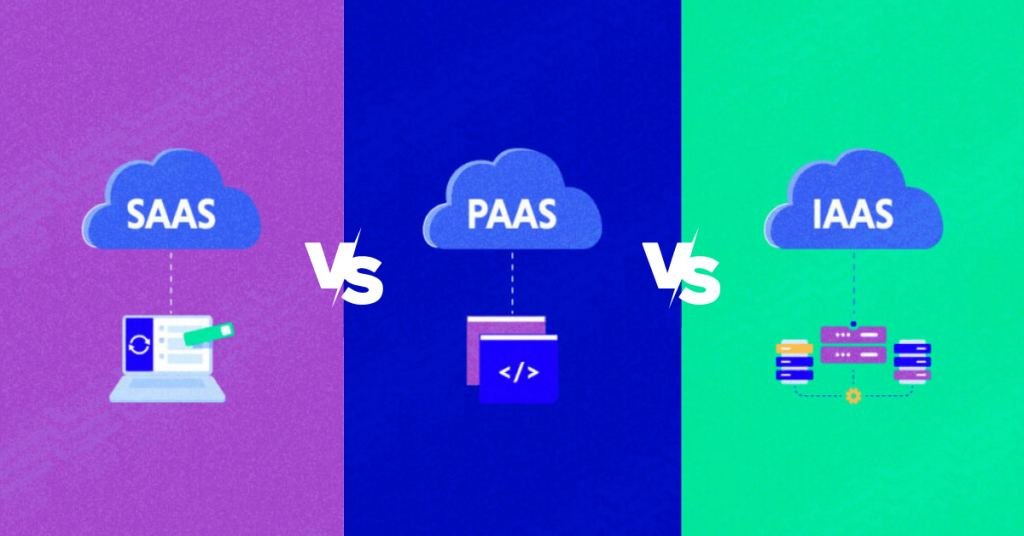Software as a Service (SaaS) has revolutionized the way businesses access and utilize software applications. This cloud-based model has gained immense popularity due to its cost-effectiveness, scalability, and ease of use. However, within the realm of SaaS, there is a specialized approach known as Vertical SaaS, which is poised to shape the future of the industry.
In this blog post, we will delve into the concept of Vertical SaaS, its benefits, and why it holds such promise for businesses operating in specific industries.
What Is Vertical SaaS?
Vertical SaaS, also known as industry-specific or niche SaaS (Software-as-a-Service), refers to software applications or solutions that are designed and tailored to meet the specific needs of a particular industry or vertical market. Unlike horizontal SaaS, which provides general-purpose applications that can be used across multiple industries, vertical SaaS focuses on addressing the unique requirements, workflows, and challenges of a specific industry sector. Vertical SaaS and horizontal SaaS are the two primary types of SaaS distribution models.
Vertical SaaS providers develop industry-specific software solutions that encompass a range of functionalities and features catering to the specialized needs of their target market. These solutions can include customer relationship management (CRM), enterprise resource planning (ERP), human resources management, financial management, healthcare management, property management, and many other domain-specific applications.
Here Are Examples of Prominent Vertical SaaS Companies:
- Veeva Systems: Veeva Systems provides cloud-based software solutions specifically tailored for the life sciences industry, including pharmaceutical, biotechnology, and medical device companies. Their offerings cover areas such as clinical trials, regulatory compliance, quality management, and commercial operations.
- Procore Technologies: Procore Technologies offers a construction project management platform designed to meet the unique needs of the construction industry. Their software facilitates project collaboration, document management, budgeting, scheduling, and other critical aspects of construction project execution.
- MINDBODY: MINDBODY provides a comprehensive business management software platform for the health and wellness industry, including fitness studios, spas, salons, and wellness centres. Their software enables scheduling, booking, payment processing, customer management, and marketing automation.
These companies exemplify the success of vertical SaaS providers by delivering specialized software solutions tailored to specific industries while experiencing significant growth and market adoption.
Check out the newly launched vertical SaaS products 👉 BufferApps

Now let’s check out the difference between Vertical SaaS and Horizontal SaaS.
Vertical SaaS vs Horizontal SaaS
Here’s a comparison table highlighting the key differences between Vertical SaaS and Horizontal SaaS:
| Vertical SaaS | Horizontal SaaS | |
|---|---|---|
| Definition | Industry-specific software tailored to a particular vertical market. | General-purpose software that can be used across multiple industries. |
| Target Market | Specific industries or vertical markets. | Cross-industry and broad market segments. |
| Customization | Highly customized to address industry-specific needs and workflows. | Less customization, more standardized functionalities. |
| Features | Industry-specific features and tools. | Broad range of features applicable to multiple industries. |
| Expertise | Deep understanding of industry-specific challenges and workflows. | General knowledge is applicable across different industries. |
| Market Size | Niche market with a focused customer base. | Larger market potential due to broader applicability. |
| Scalability | Limited scalability within the targeted industry verticals. | Can scale across different industries and markets. |
| Competitive Advantage | Domain expertise and tailored solutions for specific industries. | Versatility and flexibility across multiple industries. |
| Examples | Veeva Systems (life sciences), Procore Technologies (construction). | Salesforce (CRM), HubSpot (marketing), Zendesk (customer support). |
The table provides a concise overview of the contrasting characteristics between Vertical SaaS and Horizontal SaaS, highlighting their target markets, customization levels, features, expertise, scalability, and competitive advantages.
For more deep understanding check out our blog post on Vertical SaaS Vs Horizontal SaaS
What Are The Benefits of Vertical SaaS?
Here are some benefits of vertical SaaS that help us to know why vertical SaaS is important.

1. Industry-specific functionality:
Vertical SaaS solutions are built to address the unique requirements and workflows of a specific industry. This specialization allows them to offer highly targeted features and capabilities that are not typically found in generic SaaS offerings. By catering to specific industry needs, vertical SaaS can provide a more focused and comprehensive solution.
2. Increased efficiency and productivity:
Vertical SaaS solutions are designed to streamline industry-specific processes and workflows, which can significantly improve efficiency and productivity. By automating repetitive tasks, providing specialized tools, and integrating with industry-specific systems, vertical SaaS enables organizations to work more effectively and accomplish tasks with greater speed and accuracy.
3. Improved user experience:
Vertical SaaS solutions are often built with a deep understanding of the industry they serve, resulting in an enhanced user experience. These solutions are tailored to match industry terminology, workflows, and best practices, making them more intuitive and easier to adopt for users within that particular industry. This can lead to faster onboarding, reduced training costs, and increased user satisfaction.
4. Enhanced data and analytics:
Vertical SaaS solutions can provide industry-specific data and analytics capabilities, offering insights and metrics that are highly relevant to the particular vertical market. By capturing and analyzing data specific to the industry, organizations can gain valuable insights into performance, trends, and customer behavior, enabling data-driven decision-making and strategic planning.
5. Regulatory compliance and security:
Certain industries have stringent regulatory requirements, such as healthcare (HIPAA) or finance (PCI-DSS). Vertical SaaS solutions often incorporate industry-specific compliance measures, ensuring that organizations can adhere to these regulations without the need for additional customization or effort. These solutions also tend to have robust security features, protecting sensitive data in accordance with industry standards.
6. Competitive advantage:
By utilizing a vertical SaaS solution, organizations can gain a competitive edge by leveraging industry-specific features, expertise, and insights. These solutions enable businesses to stay up-to-date with the latest industry trends, comply with industry standards, and optimize their operations based on specific market requirements. The resulting competitive advantage can lead to increased customer satisfaction, market share, and profitability.
Overall, vertical SaaS solutions offer industry-focused benefits, tailored functionality, and improved efficiency, making them valuable tools for organizations operating within specific vertical markets.
What Are The Challenges of Vertical SaaS?
While vertical SaaS offers numerous benefits, it also presents some challenges that organizations should consider. Here are a few challenges associated with vertical SaaS:
1. Limited market reach:
Vertical SaaS solutions are designed for specific industries, which means they have a narrower target market compared to generic SaaS offerings. This limited market reach can affect the potential customer base and scalability of the solution. It may require providers to focus their marketing efforts and customer acquisition strategies on a specific industry, which can be challenging in terms of reaching a critical mass of customers.
2. Customization and flexibility:
While vertical SaaS solutions are tailored to meet the needs of specific industries, they may not fully accommodate every organization’s unique requirements. Some businesses may have specialized processes, workflows, or integration needs that go beyond the capabilities of the vertical SaaS solution. The solution may require additional development or integration work to align it with specific business requirements, limiting customization options.
3. Industry expertise and updates:
Vertical SaaS providers need to stay updated with the ever-evolving industry landscape, including regulatory changes, emerging trends, and technological advancements. Maintaining industry expertise and promptly incorporating relevant updates into the solution can be a challenge. Industry changes may result in outdated features, compliance issues, or missed opportunities to provide value to customers.
4. Integration with existing systems:
Organizations often have existing systems and infrastructure in place that they rely on for various operations. Integrating a vertical SaaS solution with these legacy systems can be complex and time-consuming. When connecting a vertical SaaS solution with existing systems, compatibility issues, data migration challenges, and integration efforts may arise. These factors can impact the implementation timeline and user experience significantly.
5. Vendor selection and reliability:
Choosing the right vertical SaaS vendor is crucial for success. However, the pool of vendors specializing in a particular industry may be smaller compared to generic SaaS providers. Evaluating the vendor’s reputation, reliability, track record, and support capabilities becomes even more important. Organizations need to carefully assess the vendor’s financial stability, scalability, security measures, and long-term commitment to the industry to ensure a reliable partnership.
6. Cost considerations:
Vertical SaaS solutions can sometimes come with higher price tags compared to generic SaaS offerings due to their specialized nature and potentially smaller customer base. The cost of customization, integration, and ongoing maintenance should be taken into account. Organizations must evaluate the return on investment (ROI) and assess whether the benefits of the vertical SaaS solution justify the associated costs.
Despite these challenges, many organizations find that the benefits of vertical SaaS outweigh the drawbacks. It is important for businesses to carefully evaluate their specific needs, conduct thorough research, and engage in proper due diligence when considering the adoption of a vertical SaaS solution.
What Does The Future Hold For Vertical SaaS?
The future of Vertical SaaS is a captivating and promising one, brimming with endless possibilities and tailored solutions for businesses across various industries. As we delve into this transformative era, Vertical SaaS is poised to revolutionize the way companies operate, enhancing efficiency, driving growth, and maximizing profitability.
Imagine a world where businesses in every sector have access to specialized software solutions designed exclusively for their unique needs. Vertical SaaS, also known as industry-specific or niche SaaS, offers precisely that. By focusing on specific vertical markets, it enables organizations to harness the power of technology in a manner that is perfectly aligned with their operations, workflows, and goals.
It provides a wealth of benefits that can truly revolutionize the way businesses function. Firstly, it offers deep domain expertise, catering to the intricate nuances and requirements of each industry. Whether you’re in healthcare, finance, manufacturing, or any other sector, this solutions are built to address your specific pain points, streamline processes, and unlock hidden potentials.
Moreover, it empowers businesses with unparalleled agility and scalability. Traditional one-size-fits-all software solutions often fall short when it comes to accommodating industry-specific needs, leaving companies with limited customization options. However, In the last two or three years, the vertical SaaS market has moved into the digital world at a very fast pace. All of the signs point to growth, operation, and success in the future.
Conclusion
Vertical SaaS represents the future of the SaaS industry by offering tailored solutions that address the unique needs of specific industries. The benefits such as industry expertise, tailored functionality, faster implementation, scalability, and compliance, make it an attractive choice for businesses seeking to optimize their operations.
As the demand for industry-specific solutions continues to rise, we can expect to see further advancements, consolidations, and expansions within the Vertical SaaS landscape. By embracing Vertical SaaS, businesses can stay ahead of the curve, leverage specialized expertise, and drive their industry forward.
So, whether you’re in healthcare, real estate, or any other industry, consider the power of Vertical SaaS to transform your business and unlock its full potential.

